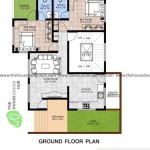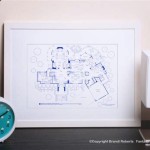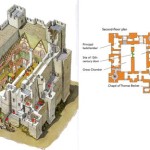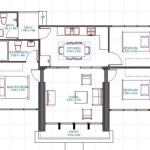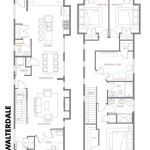Floor Plan History of the White House
The White House, the official residence and principal workplace of the President of the United States, has undergone a rich history of floor plan changes and renovations over the centuries. From its humble beginnings as a two-story mansion to its present-day grandeur, the White House's floor plan has evolved to accommodate the needs of successive administrations and the changing demands of the presidency.
Early Years (1800-1829)
The White House was designed by Irish architect James Hoban and built between 1792 and 1800. The original floor plan featured a central hall with two rooms on each side, a dining room, and a drawing room. President John Adams, the first occupant of the White House, made minor modifications, including adding a second story. President Thomas Jefferson oversaw the expansion of the house with the addition of the North and South Porticos.
Expansion and Reconstruction (1830-1902)
In 1814, British forces set fire to the White House, destroying much of the interior. President James Monroe initiated a reconstruction project that resulted in the addition of the East and West Wings. President Rutherford B. Hayes commissioned the construction of the third story and the addition of several rooms.
Modernization and Renovations (1902-Present)
In 1902, President Theodore Roosevelt ordered a complete renovation of the White House. Architect Charles McKim was tasked with modernizing the house while preserving its historical character. The renovations included the addition of electricity, plumbing, and a new East Room. Subsequent presidents have made their own modifications, including the addition of the West Wing offices for President Franklin D. Roosevelt and the construction of the underground Situation Room during the Cold War era.
Ground Floor
The Ground Floor of the White House houses the public reception rooms, including the East Room, the State Dining Room, and the Diplomatic Reception Room. These rooms are used for hosting official events, such as state dinners, receptions, and press conferences.
State Floor
The State Floor comprises the second floor and includes the President's and First Lady's private living quarters, as well as the Lincoln Bedroom. The State Floor also houses the Oval Office, the President's official workplace, and the Cabinet Room.
Third Floor
The Third Floor serves as the residence for the President's family and staff. It includes bedrooms, bathrooms, and a family dining room. The Third Floor also houses the East Terrace, which offers a panoramic view of the White House grounds.
Basement
The Basement of the White House houses the Situation Room, a secure facility used for coordinating national security and emergency response. The Basement also includes a bowling alley, a movie theater, and a barbershop.
Evolution of the White House Floor Plan
The floor plan of the White House has constantly evolved over time to reflect the changing needs of the presidency. The original two-story mansion has grown into a sprawling complex of rooms and offices, each serving a specific purpose. The White House's floor plan is a testament to the adaptability and resilience of the American presidency and the enduring legacy of the United States.

Mr Lincoln S White House

The History Of Oval Office White House Usa Floor Plans

The History Of Oval Office White House Floor Plan Layout Plans

Historical Tour Of The White House

A White House History

History Of The White House 1792 1814 Best In American Living

History Of The White House 1792 1814 Best In American Living

The White House Archisyllogy

West Wing Building The White House Usa
File White House Floorplan2 Svg Wikipedia

